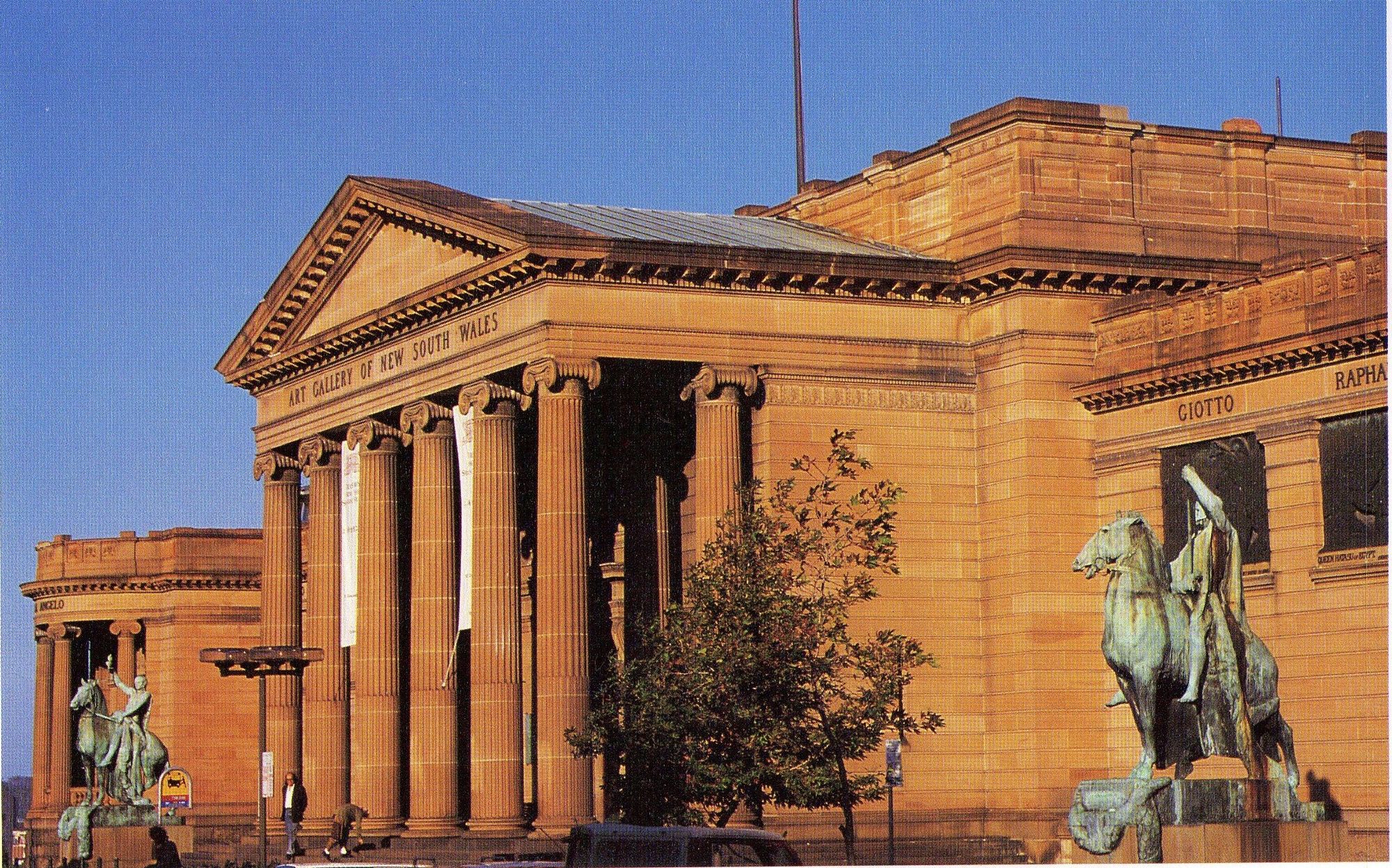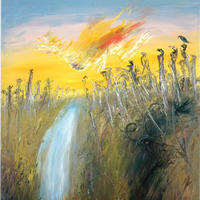More about Art Gallery of New South Wales
Works at Art Gallery of New South Wales

Sr. Contributor
The Art Gallery of New South Wales is not the first museum to start off with little more than an idea, and it probably won’t be the last; in 100 years somebody might be writing about a museum that is just now being created in someone’s mind.
That brings us to this museum located in Sydney, Australia, that got its start in 1871 with the establishment of an Academy of Art. The Academy’s purpose was to promote the fine arts through exhibits, art classes, and lectures. Unfortunately, the new Academy didn’t have a building or even any works of art to show off yet, but these things take time.
A few years later, the Gallery acquired their first painting, Apsley Falls, by Conrad Martens (which was commissioned by the trustees), and the collection would grow from there. The gallery was housed in a few temporary locations before finally moving into its permanent location in 1897. The new building would be done in stages: the first two galleries, two more in 1899, a watercolors gallery in 1901, and the Grand Oval Lobby in 1902. Speaking of things “grand,” there is a gorgeous marble stairway built in 1904; this stairway created some controversy back then because prison labor was used to build it. Apparently, the work done by prisoners “under the shade of the gallows” turned the gallery into a “chamber of horrors,” according to a rather dramatic newspaper story of the day. It also seems that some of the “outrage” occurred due to unionized labor not being used.
There are names of famous painters and sculptors lettered in bronze on different parts of the facades of the Gallery, including Diego Velázquez, Peter Paul Rubens, Leonardo da Vinci, Titian, Bartolome Esteban Murillo, Rembrandt, Donatello, Ghiberti, and of course, Michelangelo...or as the Art Gallery of New South Wales puts it, Michael Angelo. Yes, Michael Angelo is sort of a variant of that name, but as for THE Michelangelo, there’s really only one way to spell it. Back when the names were applied to the building, the Michael spelling was used by the 19th century art critic, John Ruskin, so this is one explanation that has been given for the gaffe. There also happens to be a bronze reproduction of David in a park in Buffalo, New York that had the same spelling, but it was eventually changed to the “correct” spelling.
Name spellings aside, the AGNSW has had a few other bumps along the road. Several years ago, there was a bit of controversy regarding the volunteers at the museum. The management decided to replace the volunteer front desk ticket-sellers with paid employees, much to the chagrin of the Art Gallery Society, which helps support the Gallery through volunteers and fund-raising. There was also anger about the Gallery wanting to charge schools for tours that had been offered for free by volunteers for 40 years. The Art Gallery Society is pretty influential and it’s understandable that they might have been irritated at the perception that the Gallery might be trying to undermine them.
It should also be noted that the Art Gallery of New South Wales is free to get in (aside from some paid special exhibits), and free access to art is always a good thing.
Sources
- “Art Gallery of New South Wales.” Wikipedia. Wikimedia Foundation, April 28, 2022. https://en.wikipedia.org/wiki/Art_Gallery_of_New_South_Wales.
- Habuda, Janice L. “It Can Be Fixed, but Should It Be?” Buffalo News, April 3, 2006. https://buffalonews.com/news/article_e642c1e7-3a28-5ccd-ae96-b2464eae66….
- Smee, Sebastian. “Sydney's Major Art Museum, Mired in a Dispute, Falls behind Its Rivals.” The New York Times. The New York Times, June 12, 2017. https://www.nytimes.com/2017/06/12/arts/design/sydneys-major-art-museum….
- “Sydney's Finest Marble Staircase, 1904.” Sydney's finest marble staircase, 1904 | Art Gallery of NSW. https://www.artgallery.nsw.gov.au/about-us/history/our-gallery-history/….
- “The Names on the Exterior of the Building.” The names on the exterior of the building | Art Gallery of NSW. https://www.artgallery.nsw.gov.au/about-us/history/our-gallery-history/….
- Taylor, Andrew. “Relations between AGNSW and Its Volunteers and Supporters Hit New Low.” The Sydney Morning Herald. The Sydney Morning Herald, December 15, 2015. https://www.smh.com.au/entertainment/art-and-design/relations-between-a….
- Thomas, Natalie. “Scandals from the Art Gallery of New South Wales.” nattysolo, January 9, 2016. https://nattysolo.com/2016/01/09/scandals-from-the-art-gallery-of-new-s….
Featured Content
Here is what Wikipedia says about Art Gallery of New South Wales
The Art Gallery of New South Wales (AGNSW), founded as the New South Wales Academy of Art in 1872 and known as the National Art Gallery of New South Wales between 1883 and 1958, is located in The Domain, Sydney, Australia. It is the most important public gallery in Sydney and one of the largest in Australia.
The gallery's first public exhibition opened in 1874. Admission is free to the general exhibition space, which displays Australian art (including Indigenous Australian art), European and Asian art. A dedicated Asian Gallery was opened in 2003.
Check out the full Wikipedia article about Art Gallery of New South Wales











